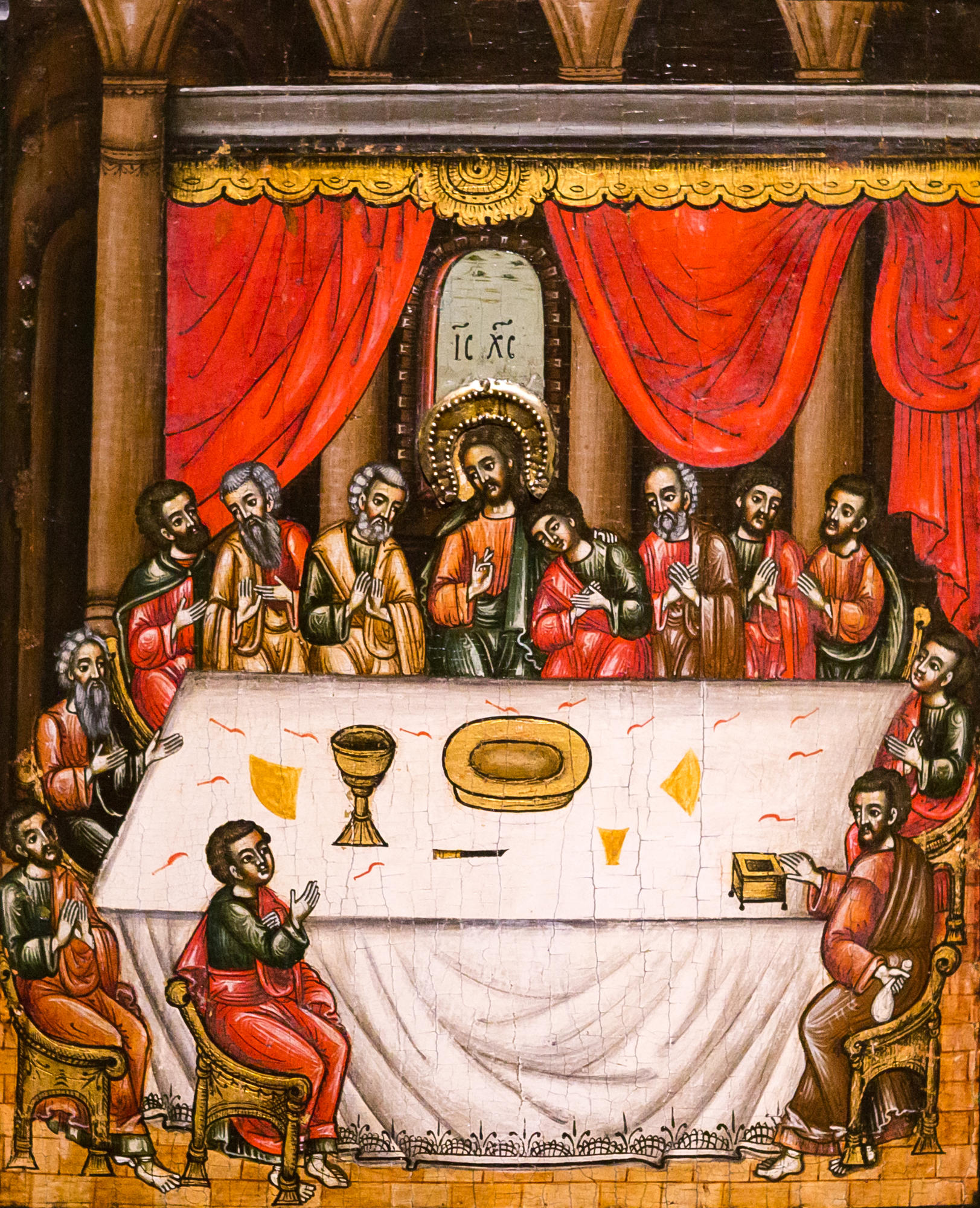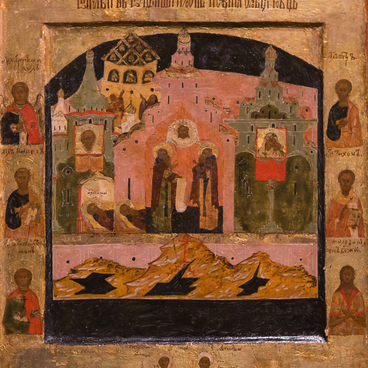The Laster Supper is the last meal of Jesus Christ and his apostles. Three important events happened at the meal. Before the meal, Christ laid aside his outer garments and washed his disciples’ feet like a servant. Later he told the apostles that one of them would betray him, and then he took the bread and broke it and gave it to the disciples and offered them wine thus establishing the sacrament of Communion, or the Eucharist. All the four canonical Gospels and the Apostle Paul’s First Letter to Corinthians mention the Last Supper. Holy Thursday, remembrance of the Last Supper, is celebrated by Christians on the Thursday of the Passion Week.
The theme of the Last Supper has been present in visual arts since the 6th century; it is one of the most popular themes in Christianity. If washing of the feet is often depicted separately, the other two events present one whole and form two iconographic types — historical and liturgical. The first one tells about the prediction of betrayal and the apostles’ reaction to it, and the second one about the appearance of the sacrament of the Eucharist. The presented icon is of the historical type.
The theme of the Last Supper has been present in visual arts since the 6th century; it is one of the most popular themes in Christianity. If washing of the feet is often depicted separately, the other two events present one whole and form two iconographic types — historical and liturgical. The first one tells about the prediction of betrayal and the apostles’ reaction to it, and the second one about the appearance of the sacrament of the Eucharist. The presented icon is of the historical type.



